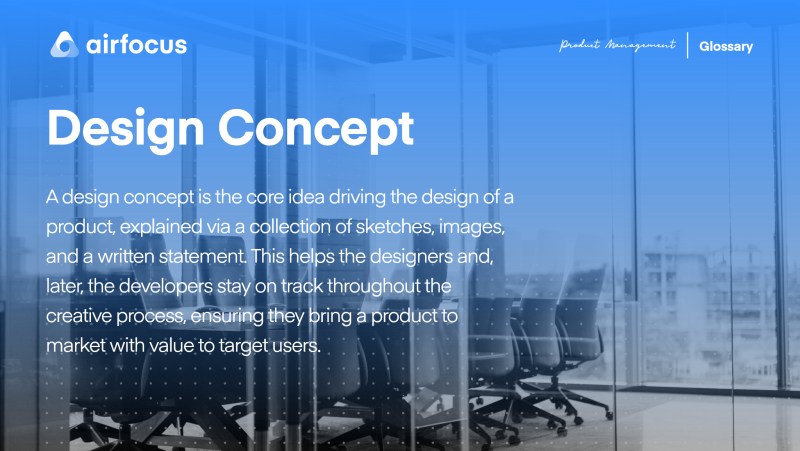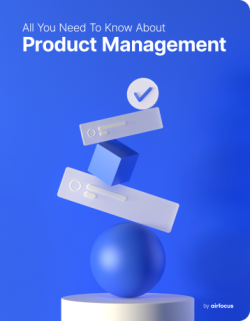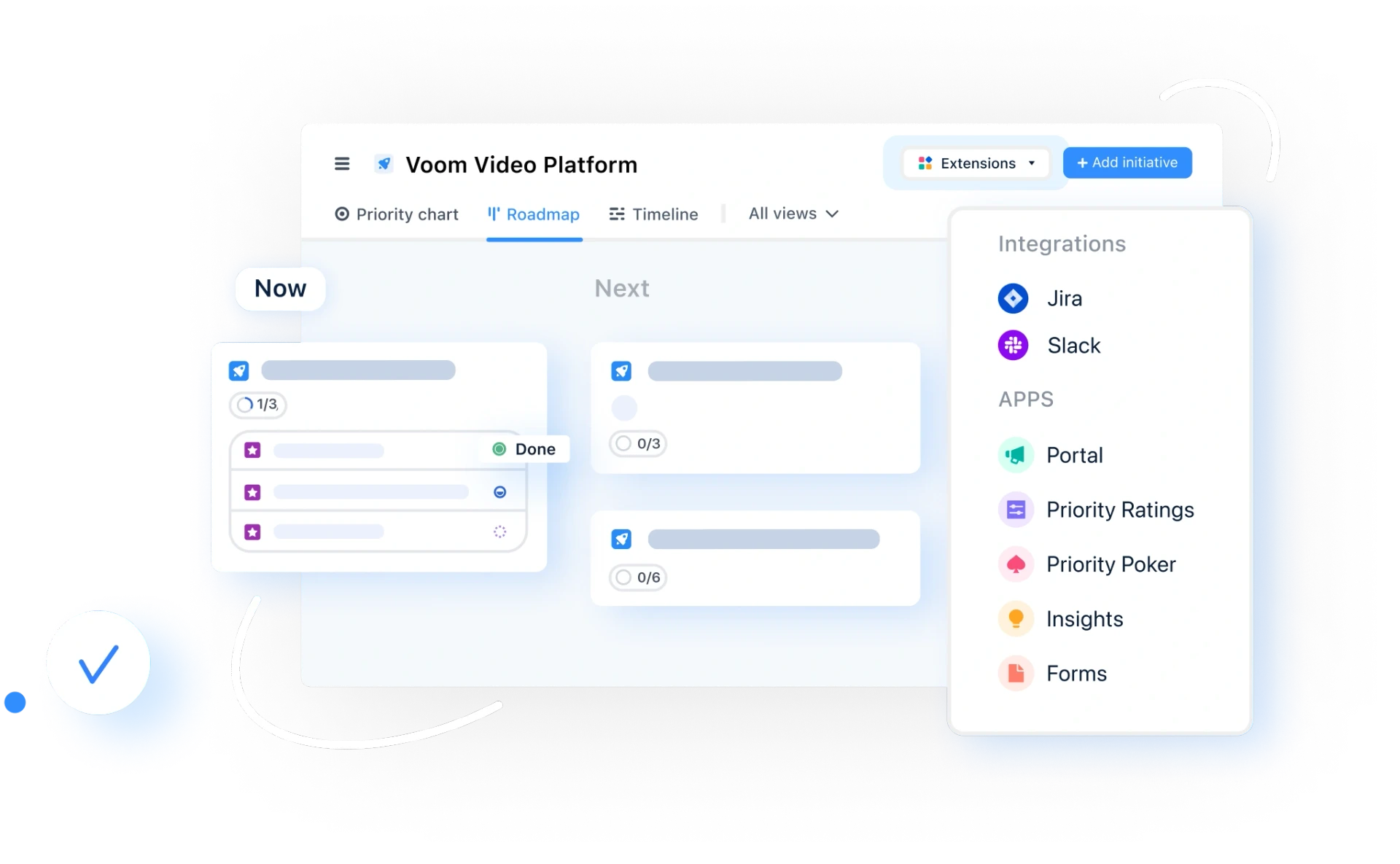Design Concept
What is a design concept?
Definition of a design concept
A design concept is the core idea driving the design of a product, explained via a collection of sketches, images, and a written statement. This helps the designers and, later, the developers stay on track throughout the creative process, ensuring they bring a product to market with value to target users.
An effective design concept makes the goal of the product explicit and serves as the foundation upon which the product is built.
Developing a design concept demands a clear understanding of the type of problems to be solved, the ideal aesthetic style, the target audience, and the client’s needs (if working on an external project).
Investing time into creating a solid design concept reduces the risk of running into dead ends once work is underway, and of investing money into a project without a clear purpose.
What are the different stages in creating a design concept?
When preparing to write a design concept, the first step is always defining the problem to be solved — which may be a solo or group task.
For the latter, consider an ideation session that brings key members of the design (and other teams) together to make the problem and solution as concrete as possible.
Those with user or client experience in a marketing or support context may have valuable input, for example.
When it’s clear what and who a product is for, the agreed design concept should be drawn up, consisting of both visuals and text (with a design concept statement).
This can be brief, but it must be simple: anyone should be able to understand the concept behind the design.
The visual elements of a design concept may comprise sketches (covering user flow, layout, menus, etc.) and basic renderings, which help demonstrate how users will interact with the product.
Multiple design options can be explored, as designers work to determine the most effective, user-friendly structure and aesthetics.
User and competitor research should also be prioritized, to identify exciting opportunities.
What is the market lacking currently?
What minor or major changes can you implement to make your product stand out? In what ways can you solve users’ problems and make their life easier that other companies aren’t already?
You may gather valuable user data by distributing questionnaires to gauge their experiences of existing products.
Try to find out where competitors have made mistakes in the past, and which are the most important functions/features to users. Client branding and user expectations should be taken into account for consistency, too.
Seeking inspiration from reference materials is the next stage. Collect examples of great design elements, visuals, or features that stand out in existing products.
These could be logos, menu designs, animations, colors — anything and everything which inspires the designers. Clients may contribute to this process, too.
Finally, design concepts should be reviewed before development begins. Research and prototyping may reveal that certain features are harder to implement than expected, or that the original concept was trying to solve too many problems.
Big and small changes may be required to reach a stage at which product development can start. That’s why sketching and renderings should be kept simple at the design concept stage.
What are the seven principles of design?
Although there are no generally agreed-upon number of principles in design, seven principles of design are most important to keep in mind.
Balance
Scale
Contrast
Pattern
Movement and Rhythm
Emphasis
Unity
These principles help artists, photographers, and designers balance their creations to create a good composition.
How do you write a design concept statement?
A design concept statement is either a sentence or a page long, used briefly but clearly to explain an idea for a product, business, or program.
It’s important to keep it as short and as simple as possible. Each point of your idea should be at most two or three sentences long.
To get started, ask yourself:
Why is the idea important?
What is the idea?
How would a customer benefit from it?
Who are your customers?
Answer these questions briefly and simply, especially the ones relating to defining your customer and their needs.
Different types of design concepts
Here are four types of design concepts:
Mood boards
A mood board is a deceptively simple approach to design concepts. It is made up of various pieces of imagery or text, such as photographs, sketches, and descriptions.
Teams can use mood boards to establish an aesthetic style or atmosphere in the early stages of a project. That provides team members with a basic but valuable visual framework that doesn’t take too much time or too many resources to create.
Wireframes
A wireframe is a streamlined prototype of an app or web page’s layout. Designers and developers can identify how content will be displayed in the finished product.
The content won’t be complete at the wireframe stage, but it creates a clear sense of space and scale. It ensures that pages and apps feature dedicated areas for visuals, text, and buttons.
Mockups
Mockups demonstrate how the finished product will look without the interactive elements. They include visuals and content but are static only.
Prototypes
A prototype takes the mockup to the next level — it’s an interactive version of the product, with internal links, playable videos, and more. This allows you to identify issues before the product goes live.
How to effectively communicate your design concepts
Your design concepts are ready, but how do you present them to stakeholders like clients, team members, and investors?
Here are three key points to consider:
Understand your audience
Think about the stakeholders in your audience and how best to communicate your design concept in terms they understand.
For example, do they already have in-depth knowledge about the project? If so, you don’t need to start from the beginning. Otherwise, you could waste their time and bore them.
Establish progress and manage expectations early
Explain to stakeholders that your design concept is far from the final product and shouldn’t be compared to products that have been through multiple iterations over several years.
They should know that what they’re looking at can and will change. If they’re not immediately impressed by a concept, be sure to listen to their reasoning. Their input could be invaluable to the project’s success.
Clarify how the design concept solves the target user’s problem(s)
Your product will solve a problem, and you should clarify how that works when presenting the design concept. Set up the problem, show why you need to solve it, and discuss how that will affect users. Use storytelling to engage stakeholders and help them see through the user’s eyes.
Design concept case study
One of the main benefits of design concepts is that they allow you to test and validate ideas before you invest in a product’s development. That helps you avoid costly mistakes and wasted time.
Follow these four key steps when working on your design concept:
Solving a problem
Let’s say you identify an opportunity for a new project management platform for remote businesses in the wake of the pandemic. More people work from home, and you have ideas for a platform that takes remote collaboration to a new level.
Create a persona to understand what your target customer needs, how much they’ll pay, and their level of technical expertise.
Create your concept
Use the different design concept types (e.g., mood boards and wireframes) to build a clear visual style and layout. Always keep your target customer’s tastes, expectations, and capabilities in mind.
Present your design concept
Present the concept to your stakeholders. Explain the product design and how it solves the problem in an engaging style.
Repeat the process with updates
Treat future product updates as new products in themselves. Pinpoint the problem a fresh feature will solve before you invest in it.

General FAQ

Glossary categories
Experience the new way of doing product management

Experience the new way of doing product management








